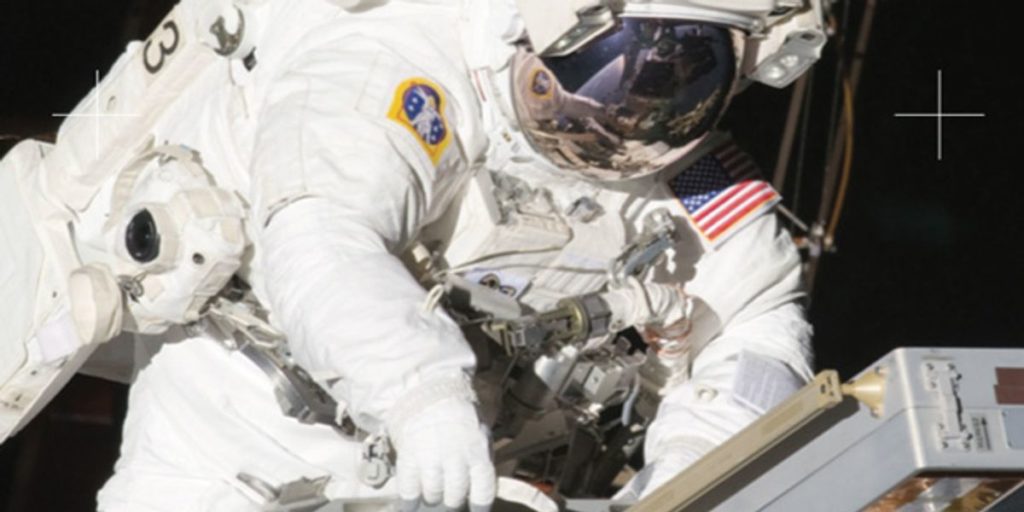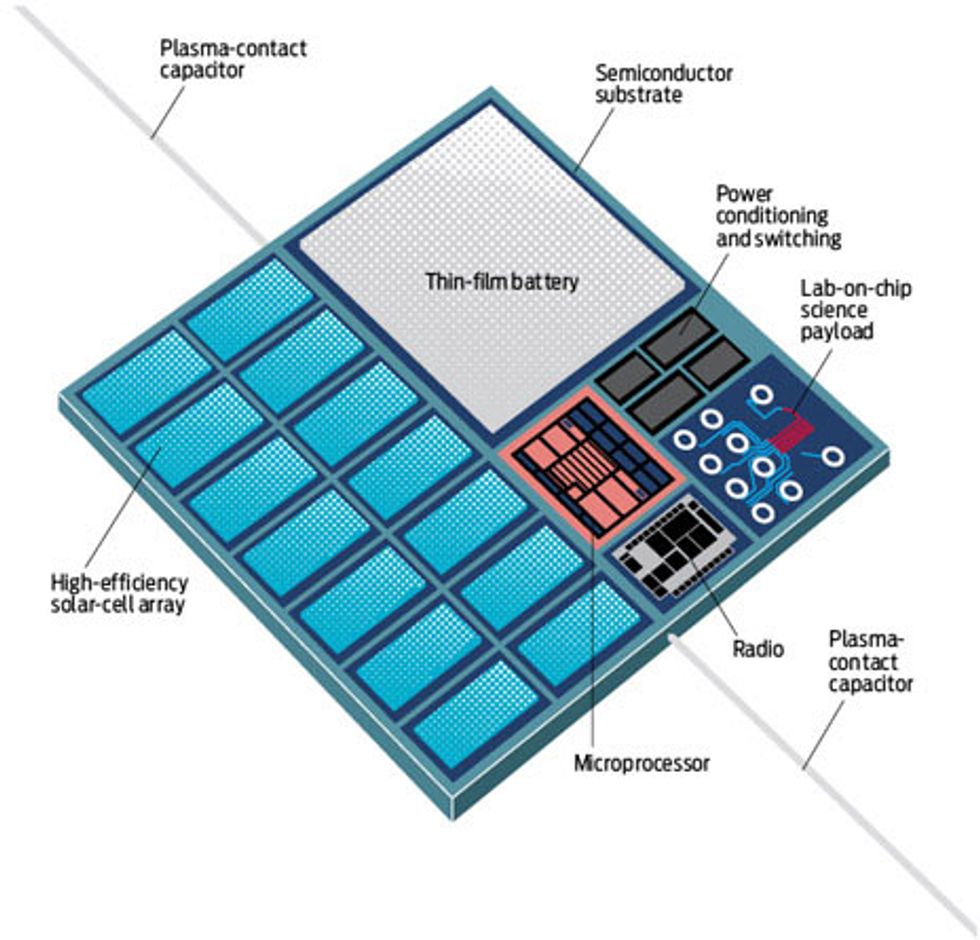Launching a million Sprites would be pointless unless a substantial number of them could survive the many hazards of space, including charged particles, micrometeorites, and extreme temperature swings. Their hardiness is one of the things we hope to gauge in our current experiment aboard the space station.
The Sprite prototypes have been mounted on the exterior of the ISS on a materials-science pallet called MISSE-8, which stands for Materials on International Space Station Experiment 8. Fabricated by hand in the lab, each prototype measures 3.8 cm on a side and contains seven tiny solar cells, a microprocessor with a built-in radio, an antenna, an amplifier, and switching circuitry to turn on the microprocessor whenever there’s enough stored energy to create a single radio-frequency emission—a digital “beep.” We’ll use the timing of the Sprites’ beeps to tell us the sun’s angle of incidence on the chip. The more oblique the angle, the longer it will take for the chip’s capacitor to charge. Measuring the time between beeps will give a rough measure of the chip’s orientation to the sun.
Beyond just telling us how well the Sprite components survive in space, the experiment will reveal whether the 902-megahertz radio pulses that the chips emit can be detected on the ground. The transmitters on the prototypes must operate on very little power: The capacitors store just 1 microjoule of energy, enough to power a 100-watt lightbulb for about 10 nanoseconds. As a result, the signals are weak, only 7 percent as strong as the buzz of background noise coming from the sun and man-made sources.
To pick up this subtle signal, we need a way to make it unique and easy to extract. The best technique for the job is a technology called code-division multiple access (CDMA), more commonly used in GPS and cellphone signal processing. With CDMA, every bit of data that a given Sprite transmits is converted into a sequence of shifts in the timing, or phase, of the radio signal. These “m-sequences” will make it easier to pull the signal out from noise. They will also allow listeners on the ground to differentiate one Sprite from another, because the patterns are as unique as fingerprints, and each chip gets just one. CDMA will thus allow many Sprites to share the same carrier frequency and transmit signals to the same ground receiver, just as it lets hundreds or even thousands of cellphone users place calls at the same time.
Expanding each bit into an m-sequence should make up for the Sprites’ power limitations. That’s because the longer the sequence, the more powerful it will be: The signal strength is effectively integrated over time. We calculated that signals coming from the space station should be fairly easy to detect if each bit is split up into a sequence of 512 phase shifts. Such sequences take a few milliseconds to send. Sprites that are farther from Earth will need to use longer sequences to transmit each bit. A Sprite in orbit around Jupiter, for example, will likely need a full day to send a signal that can be picked up on Earth. But the chip would be able to do that with a transmitter that draws only a few milliwatts of power. With thousands of Sprites in orbit, kilobits of data can be sent each day, but it would take many millions to rival the transmission rate of conventional spacecraft. NASA’s Cassini orbiter, in orbit around Saturn, can send as much as 165 kilobits of data back to Earth each second.
Because of their power limitations, it will be difficult to create Sprites that can communicate with one another fast enough for them to operate as a collaborative swarm. But the spacecraft could still stay close together as they travel through the solar system by taking advantage of what’s known as the Interplanetary Transport Network. The network consists of pathways that wind through space according to the gravitational potentials of the planets. For a cluster of Sprites, the pathways would act like ocean currents, binding them together and sweeping them along as if they were a colony of plankton.
Sprites would have other ways of getting around. Although carrying onboard propellant is impractical, the Sprites’ diminutive size will make them ideal for harnessing the sun’s radiation pressure. Photons carry momentum, and when they strike a surface, they transfer that momentum as force. This force blows dust particles out of the solar system and has also been used to adjust the trajectories of interplanetary probes, including NASA’s Messenger spacecraft, which entered orbit around Mercury in March.
The basic physics that would propel a Sprite is the same as for cosmic dust. Sprite propulsion relies on the fact the surface area of an object does not shrink as fast as its volume. Halving the radius of a uniform ball, for example, will reduce its volume by a factor of 8, but it will drop the surface area by only a factor of 4. As an object shrinks in size, this property of geometry favors forces that operate on the surface, such as aerodynamic drag, allowing it to more easily overcome the object’s inertia.



